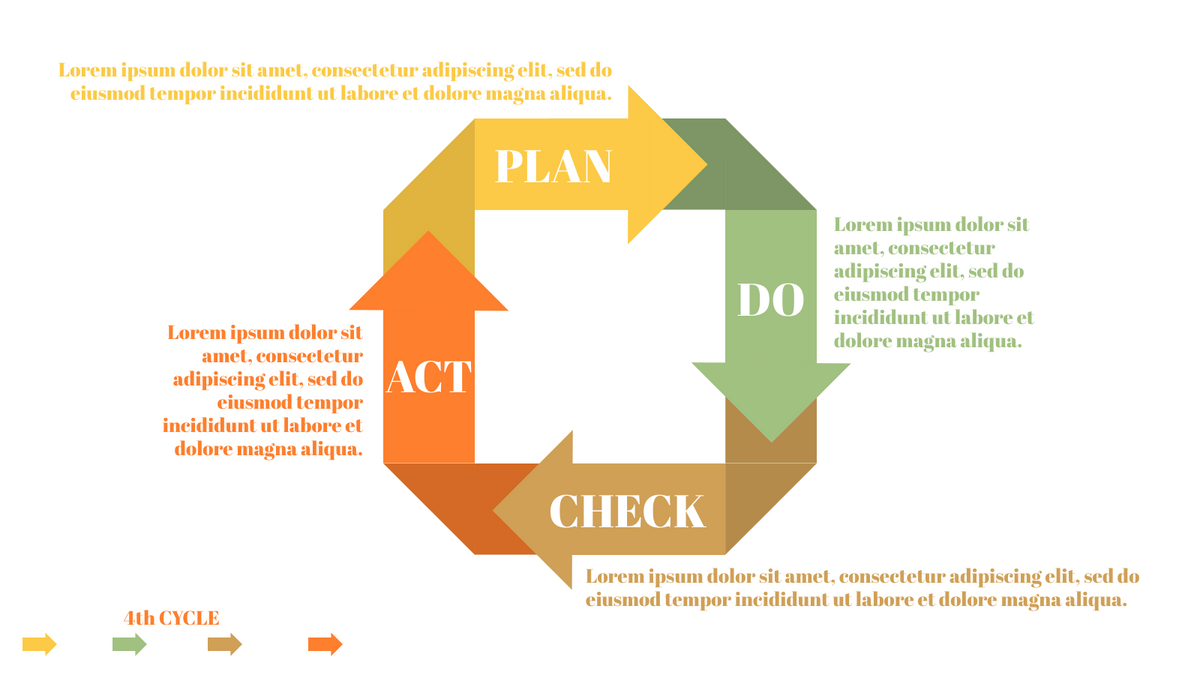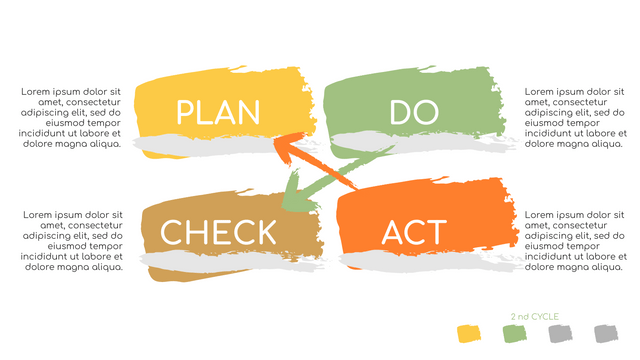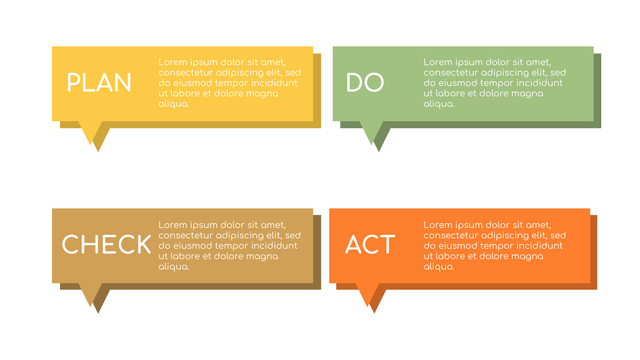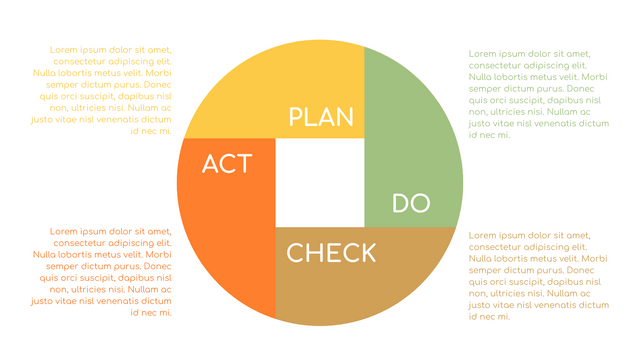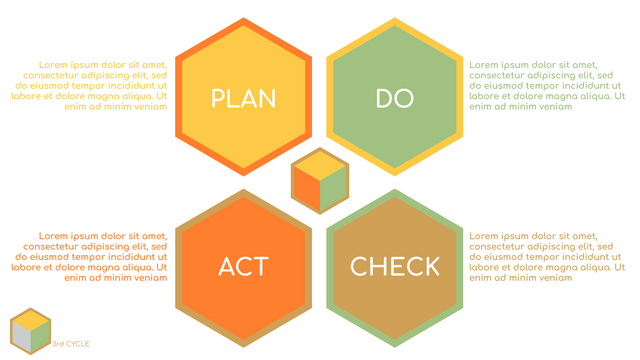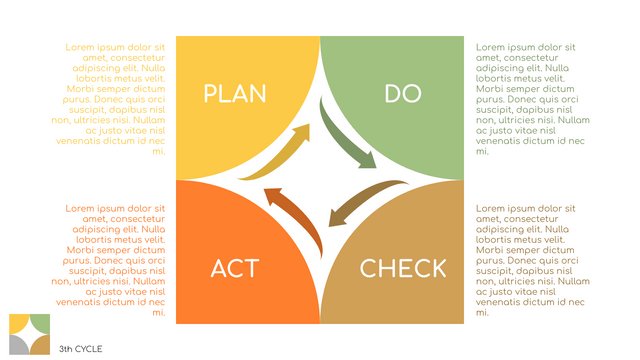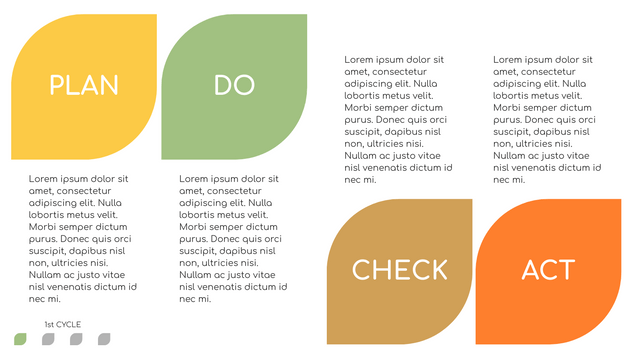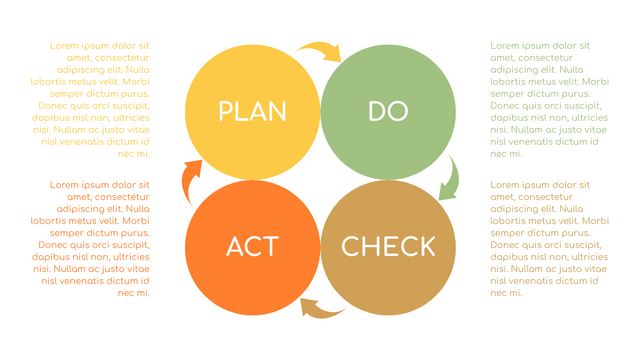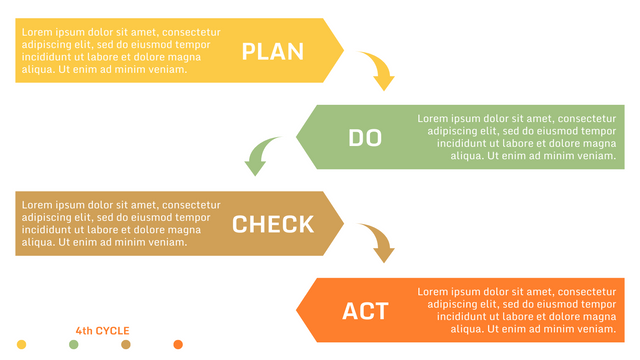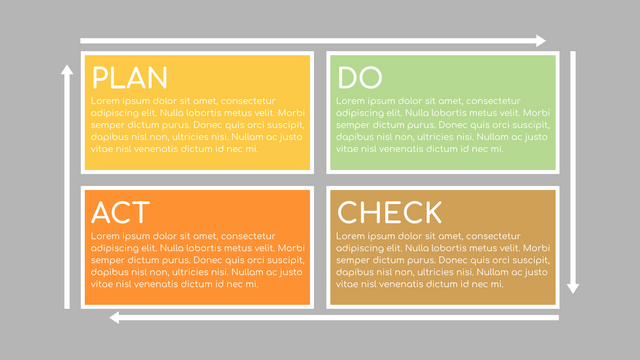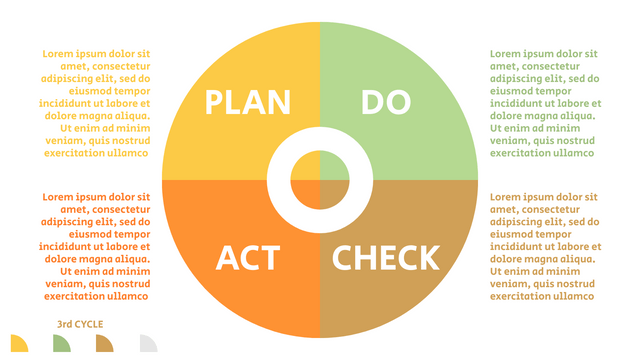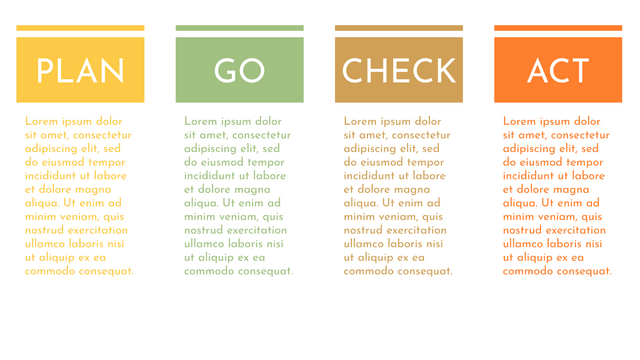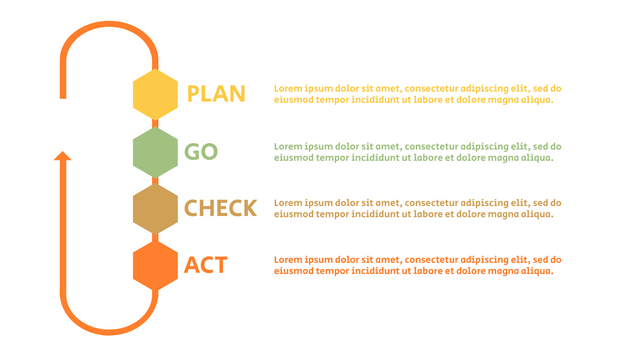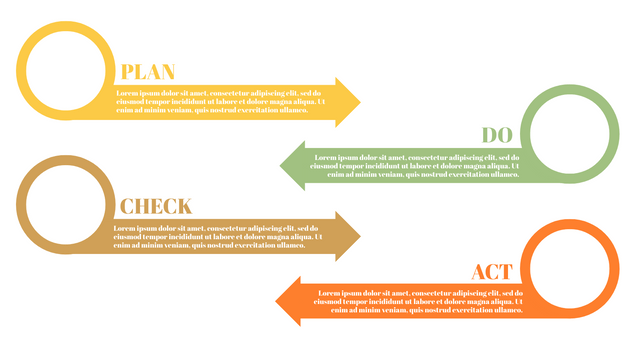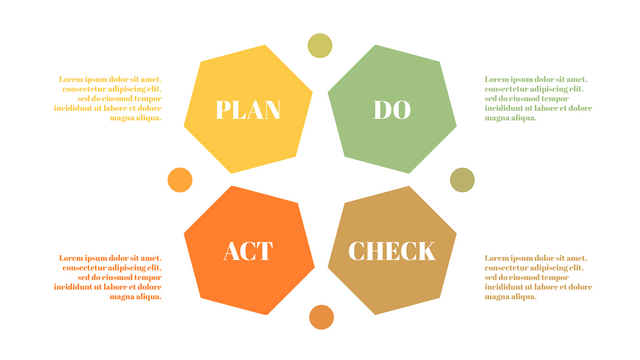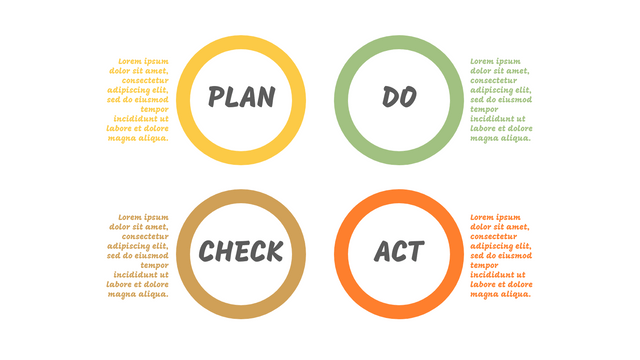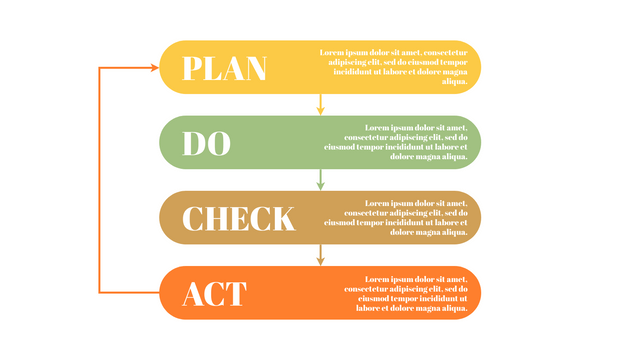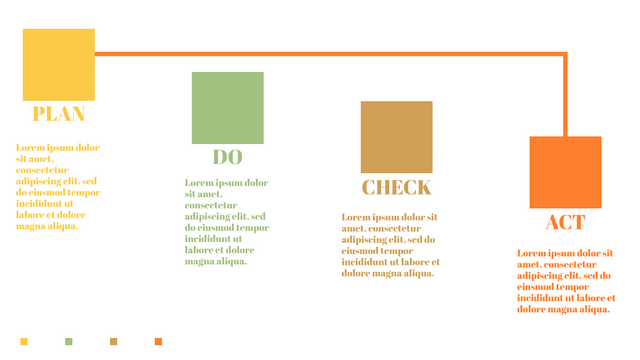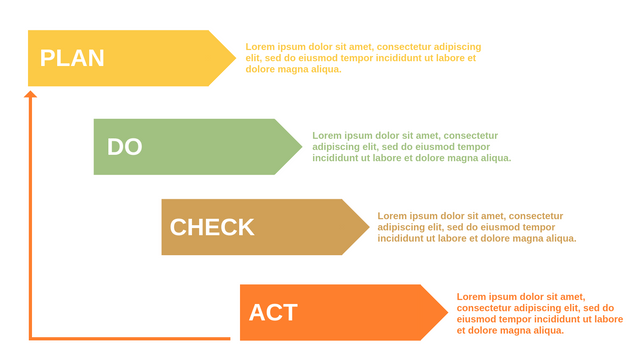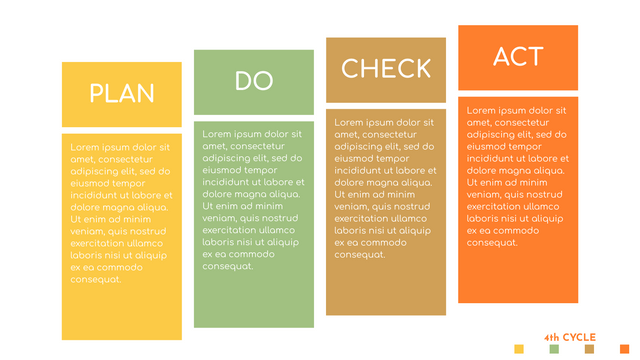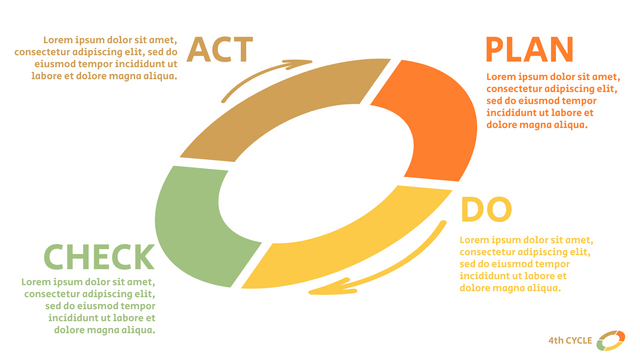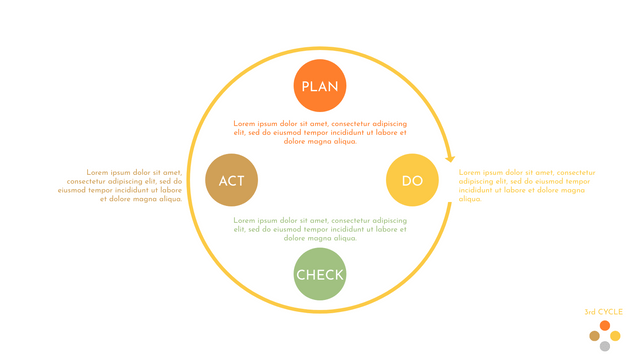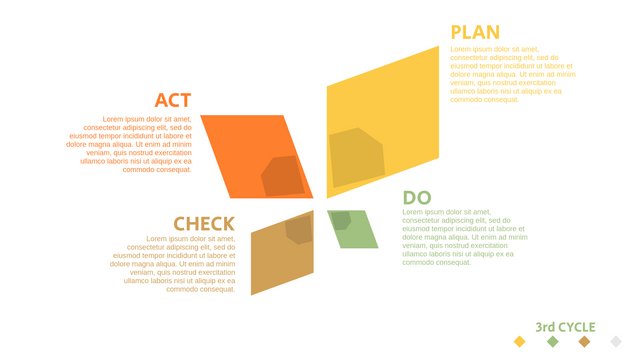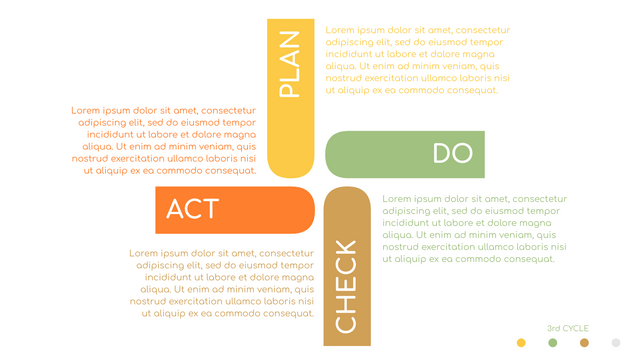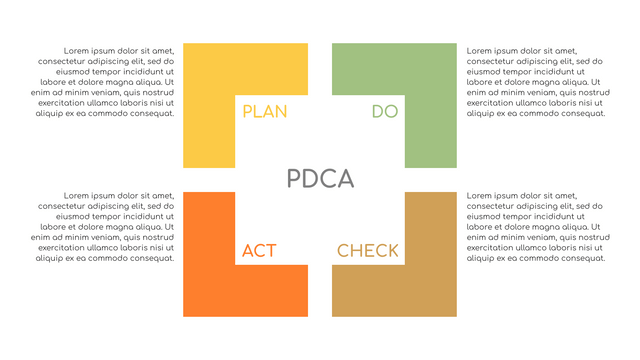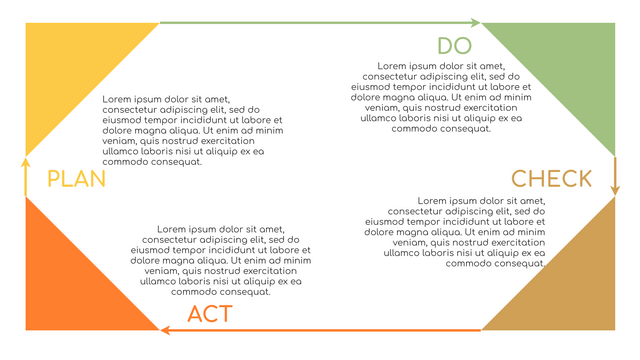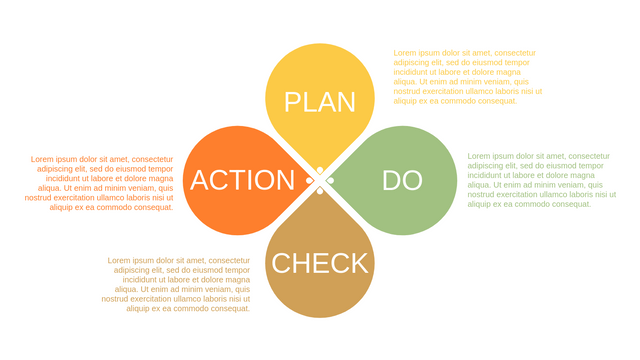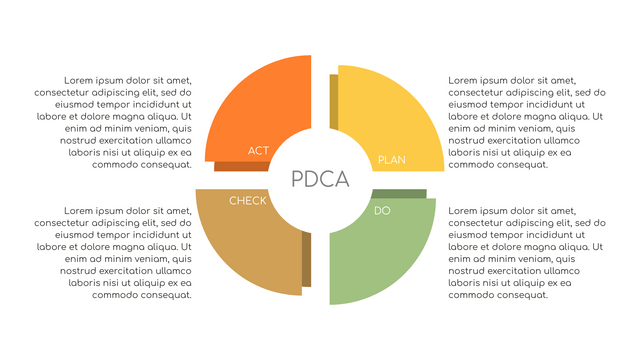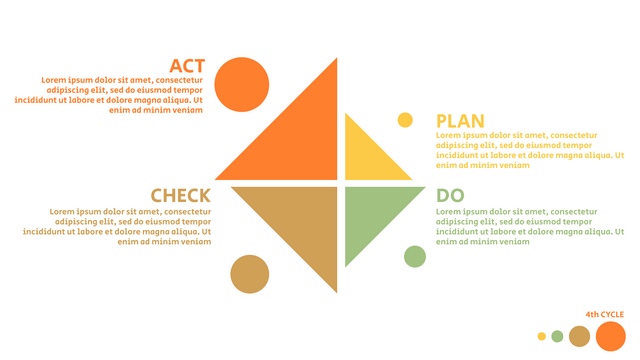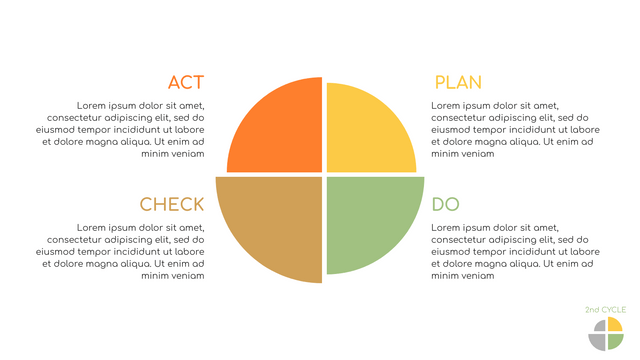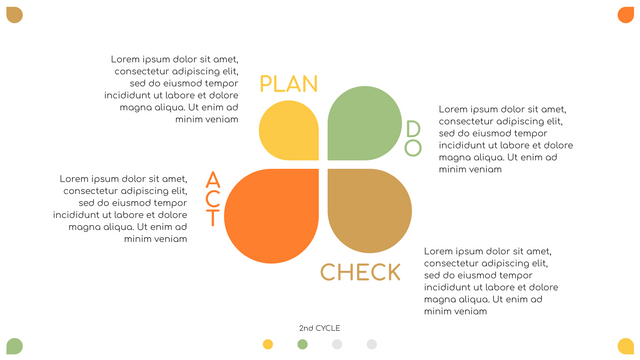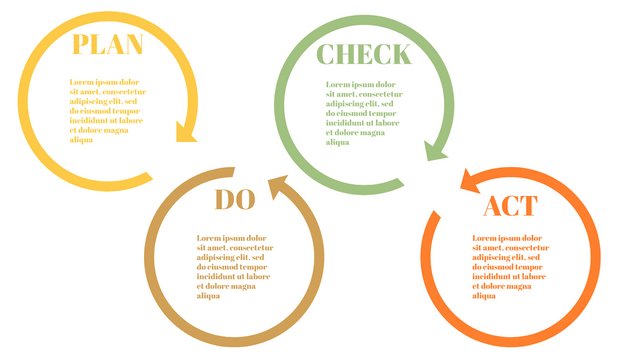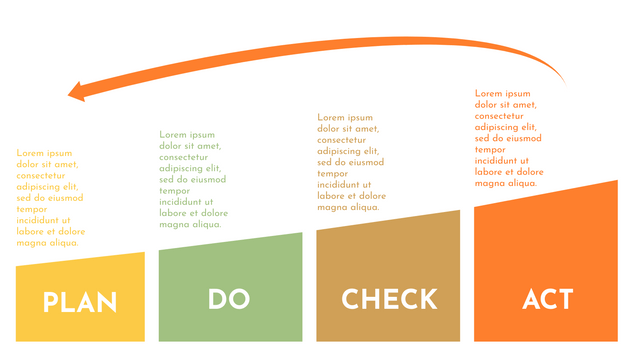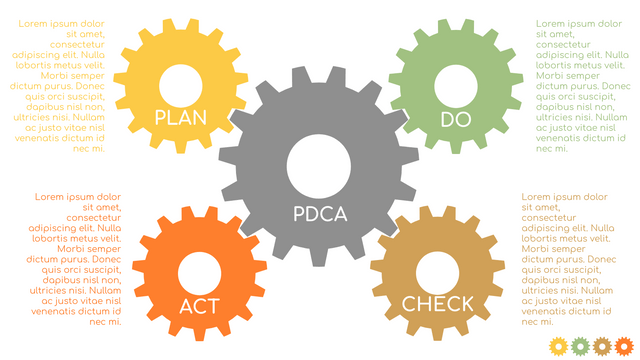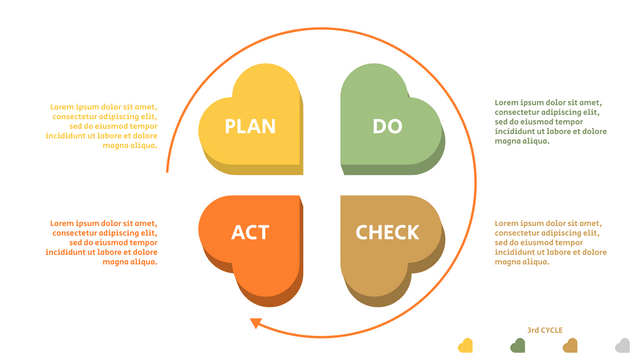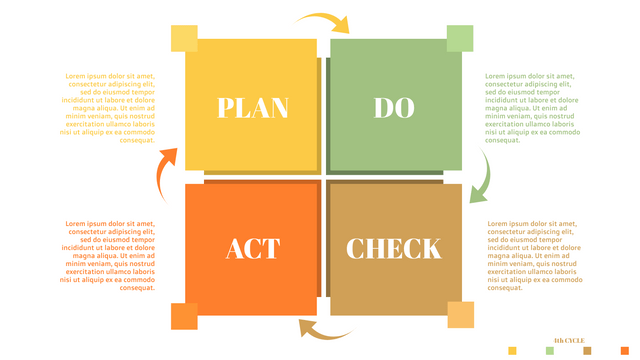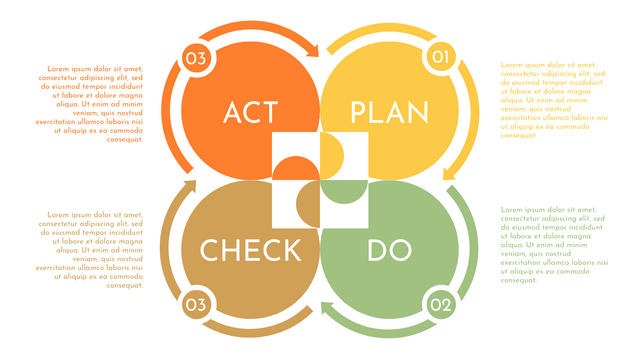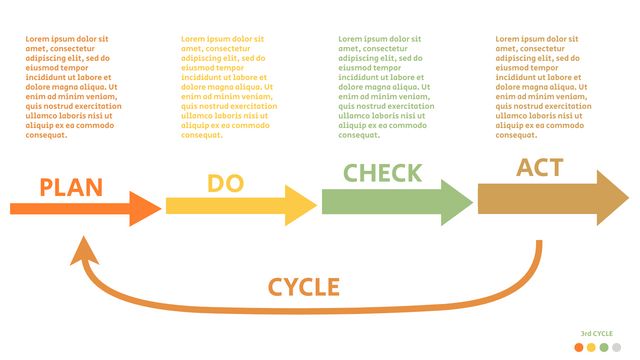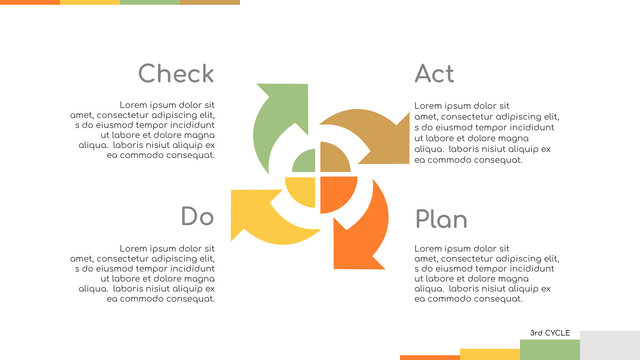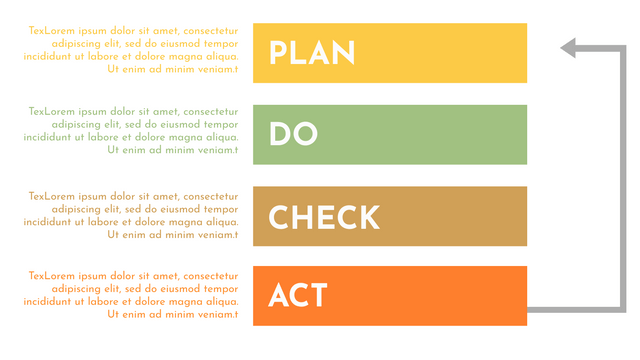The PDCA cycle is a great tool to help your team stay consistent and organize their thoughts and actions. Teams can use it to solve problems and find solutions, as well as to improve business processes. Many organizations use the PDCA pattern to organize their quality improvement efforts.
The PDCA cycle was originally developed by quality expert Walter Shewhart in 1930 and is therefore also known as the Shewhart cycle. Later, Dr. Edwards Deming extended this cycle and it became known as the Deming cycle.
P (Plan): determine the problems to be solved, collect relevant data, and determine the root cause of the problem.
D (Do) : develop and implement solutions; decide how to measure their effectiveness.
C (Check): confirm the results by comparing the data before and after.
A (Act): record results, inform others of process changes, and make suggestions on problems to be solved in the next PDCA cycle.
Therefore, this phase is both the end and the beginning, as the entire PDCA cycle will be reformulated with new guidelines and parameters after a thorough investigation of the causes of past errors.
The spirit of the PDCA cycle
The Plan-Do-Check-Action cycle seems like a very simple, iterative four-step management approach. When using a PDCA loop, remember that it is a continuous process, not an end-to-end process, but a loop that never ends; These updated and improved steps need to be repeated again and again in a new cycle for continuous improvement. Once you get to the final stage of stepping in, you need to go back to the beginning and start again. Constantly look for problems and improvement methods to improve production and service systems, improve quality and productivity, and constantly reduce costs.
